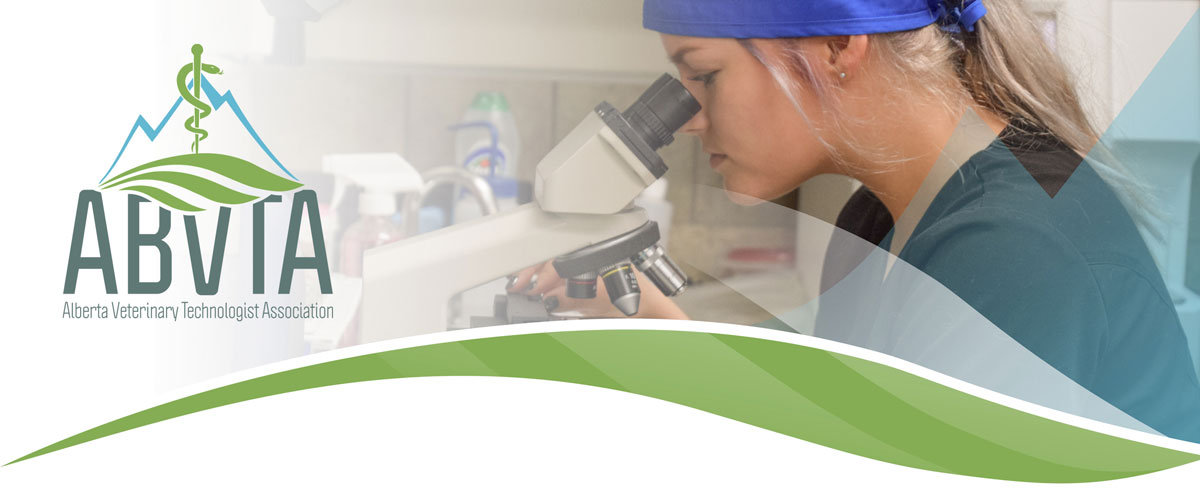Resource guarding is an umbrella term—also known as “possession aggression” or “food-related aggression” in dogs—and rarely ends in sharing. It is defined as “[a] normal behaviour which can become maladaptive. It may be directed at familiar and unfamiliar humans or animals that approach the dog when it is near or in possession of something it values. Guarded items can include food bowls, chew toys, people, pets or places.” 1
From an evolutionary standpoint, dogs obtain food by scavenging. Therefore, they inherently work and compete for food and desired resources. A dog displaying guarding behaviours will display body language related to defensive behaviour such as: lip lift, display direct eye contact, vocalize, snarl, and growl, and it can escalate to a bite2. Guarding is a ritualistic behaviour and the intent is not to injure if it can be avoided. Instead, it is done to communicate a feeling of being threatened and to further increase the distance between the guarding dog and the threat. Problems arise when owners do not necessarily have the knowledge to understand and manage these behaviours. 2
A common myth related to resource guarding is that owners feel they “should’ be able to take food or resources from their dogs. This is not only in relation to guarding, as there is an idealized concept that suggest because we are human, we “should” assert our dominance towards dogs to show them we are the “boss” or the “alpha”. This is fallacious and often leads to the mistreatment of animals. This concept, along with the misinterpretation of signals can increase the risk that owners may punish a dog, increasing the likelihood that the dogs will develop escalating resource guarding behaviours. For example, play can often be misinterpreted as threatening, especially when the dog is in possession of an item that has been stolen or is something that they are not allowed to have. Often puppies will take an item and run away, and vocalization such as play growls are common in these scenarios. This can lead to puppies being punished if owners are unable to recognize the difference between play growl and aggressive growls 3. Punishment by owners can lead to fear and anxiety which can then develop into undesirable behaviours such as resource guarding.
In a recent study by Jacobs et al., (2017), it was found that three factors are related to resource guarding: avoidance, rapid ingestion, and aggression.4 They found owners were able to identify aggressive behaviours, such as growling and snapping more readily than the subtler signs of avoidance, such as the dog averting their gaze when in possession of an item. Education by veterinary professionals can help aid owners in seeing the warning signs early and preventing the development of resource guarding. Common signs or fear and anxiety escalate from subtle signals such as yawning, lip licking and averting gaze, to more obvious signals such as blocking an item with their body, lip lift, growling, snapping and ultimately biting (Figure 1)

This dog is uncomfortable while eating and is showing signs of stress; ears back and tail tucked.
Regardless of whether a Veterinary Technologist is assessing a new puppy or adult dog, discussions on normal dog behaviour is imperative. Further, discussing the use of positive, science-based training methods should be included in such discussions, as well as and why punishment should be avoided. It is vital to teach owners to recognize signs of stress and fear when they first bring a new dog or puppy into their home so they can be proactive in prevention and treatment of resource guarding.
For Veterinary Technologists, asking specific questions about behaviour at every exam is a great starting point for assessing resource guarding behaviour. Questions to consider asking might be directed at where the dog eats, their response to taking items they should not have (Kleenex, shoes, children’s toys, etc.), and how they respond to having the item taken away from them. Providing a handout outlining the prevention of resource guarding and signs of stress should be available, as this can be a great reference for owners. Owners often feel overwhelmed with information provided at their first or second puppy examination and providing a handout can allow them to refer to the prevention and management information again after the visit. Such preventative recommendations for resource guarding should include:
1.Training sessions that are done in a quiet environment without the distraction of other people or household pets.
- The avoidance of touching the dogs while they are eating, as this may increase anxiety around their food bowl or toys.5
- In multi-pet households, it is important that all pets are given a separate space to eat. The pet who takes the longest to finish a meal could be placed behind a closed door or in a kennel.
- Training a dog to have positive experiences around their food bowl and other items should be considered to prevent and alleviate feelings of anxiety. In this exercise (Figure 2), the owner could place a few kibbles or treats in their dog’s food bowl, place it on the ground and allow them to finish all the food in the bowl, then repeat. 5 Furthermore, we can increase positive associations with the proximity of the owner to the bowl or valued item by having the owner toss treats when in proximity and then retreating. The goal of the exercise is not to remove the item from the dog but to teach them that good things happen when someone approaches them and their item.7

This is a dog learning “sit and be calm” for food.
- Teaching puppies to sit for all items, such as food, attention and any structured interaction is recommended to improve impulse control. Sitting is a desirable response substitute to becoming overly excited around desired items.3
- Because puppies explore their environment with their mouths, we can trade an item that are not suitable for ones that are. For example, when a dog has an item such as a Kleenex, a shoe, or piece of garbage, owners could approach the dog with a high-value food treat and offer it in exchange for the item they have in their mouth. Most dogs will drop what is in their mouth and take the treat offered in lieu, and the inappropriate item can be put away. Occasionally, it will take more than one treat—owners can place a pathway of treats away from the item and while that dog makes their way down the path, they will eventually drop the item.1
- Interactive games, such as tug-of-war, with a dog is a great way to teach them that relinquishing an item does not mean that fun time is over. Playing tug with two toys of equal value can be a suitable option. This way once your dog drops the toy that is in their mouth, they are rewarded with the other toy you are holding. Tug also helps to teach dogs impulse control which is helpful when working to prevent resource guarding behaviours5.
Management and Treatment
Prevention may not always be possible, and management and treatment protocols might be needed. If an owner has expressed concern about their dog’s potential resource guarding behaviour, a thorough history should be taken. If a dog has historically been punished for taking items, they may display signs of defensive aggression that can like resource guarding it is vital a thorough history be taken to differentiate the two.1 A diagnosis should be made by a veterinarian. A behaviour modification plan should then be designed, and in severe cases, medication may be warranted. This behaviour plan can be implemented by a registered veterinary technologist or positive, science-based dog training professional.
Treatment protocol should be used in conjunction with management of the dog’s environment and resources. As mentioned, body language can indicate when a dog is feeling stressed or anxious. Understanding and recognizing stress signals is important for successful management and treatment of resource guarding. If these signs have been ignored, punished, or have gone unrecognized, the dog may resort to aggressive displays. There is also a risk that a dog could quickly ingest an item as a person or another animal approach, giving rise to health concerns.
It is also important to consider the safety of family members and other pets. If a resource guarding dog responds by growling and/or lunging as a person or another animal approaches, consider removing the item(s) from the dog’s repertoire completely3. Alternatively, placing the dog in a safe place such as a kennel or behind a closed door so they can finish their treat alone is an option. Dogs that guard their food bowls should always be fed meals behind a closed door or in their kennel, and their bowl should only be removed once they are finished and have left the area. Children should be instructed to never approach a dog in their kennel or remove food items, toys or stolen items from their dog and should get an adult to help.
Behaviour modification will consist of both systematic desensitization and classical counter-conditioning. These techniques are usually recommended together for treatment of resource guarding. Systematic desensitization requires that the intensity of the stimulus be controlled and always kept at a level where the dog does not show a response to the stimuli6. Classical counter-conditioning is a technique used to change an existing classically conditioned response (emotion, reflex, or secretion) and to replace it with a new response to the same stimuli6. In the context of resource guarding, this would entail the dog being set up with a low-value item while the person (stimuli) would slowly approach the dog at a distance that the dog can remain calm and toss higher value items in their direction. When done correctly, the dog will learn to make a positive association with the approaching stimuli over time, and this should result in a decrease of guarding behaviours1.
Furthermore, using operant counter-conditioning to teach a reliable “drop it” cue and “leave it” cue can be helpful when taught using positive reinforcement and by shaping the behaviour—the process of reinforcing successive approximations until the end goal is achieved. A word of caution: depending on the severity of the behaviour and value of the item, this is not a sole treatment for resource guarding and should be used in conjunction with the establishment of classical counter-conditioning and systematic desensitization protocols. The “leave it” cue differs from “drop it” by stopping the dog from getting the item in the first place and redirects their attention to you.
Medication
Using medication in conjunction with behaviour modification is recommended if dogs are highly reactive in the presence of certain objects or food3. In addition, considerations for owner compliance and follow-through with behaviour modification should also be a factor in deciding if medication is warranted. Recommended medications for resource guarding include tricyclic anti-depressants (TCAs) or selective serotonin reuptake inhibitors (SSRIs). When deciding which would be best in a given scenario, observe whether the dogs is ritualistic in their guarding or more impulsive. Ritualistic behaviours benefit from TCAs whereas more impulsive resource-guarding behaviours could have more success with an SSRI6. Veterinarians should also consider whether there are other co-morbid conditions the patient could be suffering from. For example, it is not uncommon for dogs that are diagnosed with resource guarding to also suffer from other aggressive diagnosis such as protective, territorial, redirected or impulse-control aggression. The use of additional medication such as Gabapentin can be helpful for dogs that guard but are also generally anxious3. Medication choices should keep arousal and anxiety levels to a minimum ensuring more success when behaviour modification is implemented.
Conclusion
There is a degree of normalcy with resource guarding. As humans, we have all had experiences where we have a valuable item we don’t want to share-or have taken away and it is important to be able to empathize with our dogs. However, the aggressive displays our canine companions can display over a valued item can be scary and a safety threat. Education starts in our shelters, exam rooms, and amongst the veterinary professionals to set owners and their dog up to succeed.
To download client education on resource guarding, click here.
By: Jessica Benoit RVT, CPDT-KA, KPA CTP, VTS (Behaviour) candidate
References:
1.Landsberg GM, Hunthausen WL, Ackerman LJ. Handbook of Behaviour Problems of the Dog and Cat. Oxford: Butterworth Heinenann; 2013.
- Mohan-Gibbons H., Weiss E., Slater M. Preliminary Investigation of Food Guarding Behaviour in Shelter Dogs in the United States. Animals (Basel). 2012 Aug 3;2(3):331-46. Doi 10.3390/ani2030331.PMID:26487025
- Overall KL. Manual of Clinical Behavioural Medicine for Dogs and Cats. St. Louis, MO: Elsevier; 2013.
- Jacobs JA, Coe JB, Pearl DL, Widowski TM, Niel L. Factors associated with canine resource guarding behaviour in the presence of people: A cross-sectional survey of dog owners. Preventive Veterinary Medicine. 2018;161:143-153. doi:10.1016/j.prevetmed.2017.02.005.
- Shaw J, Martin D, editors. Canine and feline behaviour for veterinary technicians and nurses. John Wiley & Sons; 2014
- Howell A, Feyrecilde M. Cooperative Veterinary Care. Newark: John Wiley & Sons; 2018.
About the Author
Jessica graduated from the NAIT Animal Health Technology program in 2010. Since graduating, she has been focused on increasing her knowledge of animal behaviour and low stress veterinary care.  Jessica loves to teach clients how to strengthen their bond with their pets through positive science-based methods of training and behaviour modification.
Jessica loves to teach clients how to strengthen their bond with their pets through positive science-based methods of training and behaviour modification.
In addition to being a Registered Veterinary Technologist, Jessica is the co-owner of Companion Veterinary Clinic, a Certified Professional Dog Trainer, Karen Pryor Academy Certified Training Partner and Fear Free Certified veterinary professional, trainer and speaker. Jessica is looking forward to sitting for her VTS (behaviour) board exam in September 2020. Jessica believes animal behaviour is an integral part of veterinary medicine and enjoys teaching and mentoring future and current veterinary technologists.
